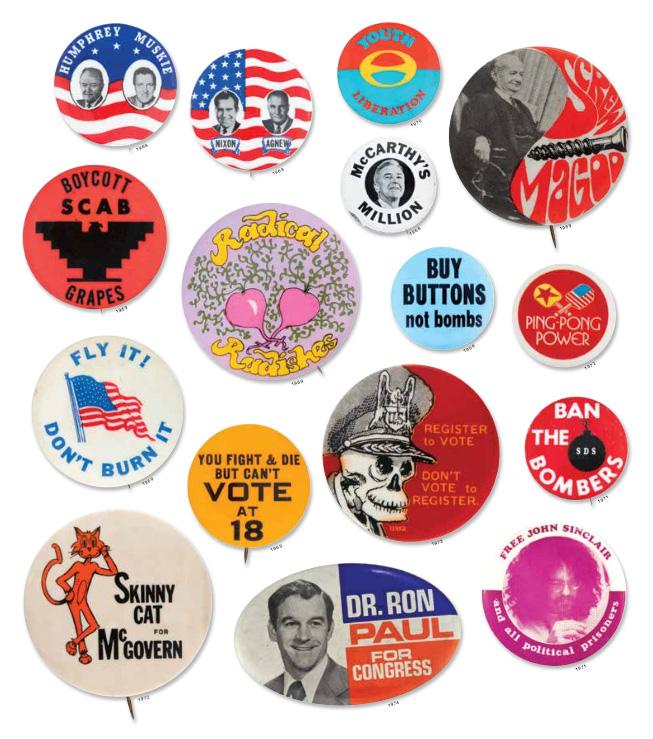Buttons from the early twentieth century show a country going through great changes. From prohibition to the Great Depression and World War I, the 1910s, '20s, and '30s had a lot to get people politically agitated about. In 1920, the passage of the Nineteenth Amendment completely changed the political landscape by giving women the right to vote. And the unpopularity of the Eighteenth Amendment, Prohibition, got nearly everyone involved in politics, leading to its repeal in 1933.

Since our very first president, Americans have adorned themselves with political messages. A compact way to tell the world about your political views and preferred candidates, buttons and pins have long served as simple, easy ways to boldly show your support. Though materials used have evolved over the years, and today buttons have largely been replaced by stickers, t-shirts, hats, and other gear (including the 2020 facemasks), these small tokens can teach us a lot about American visual culture and our political history.
For those looking to delve deep into these petite historical relics, Princeton Architectural Press’ new book BUTTON POWER: 125 Years of Saying it with Buttons tells important stories from American history, with sections on sports, pop icons, TV and movies, bands, cartoons and comics, precursors to emojis, and activism, which we take a closer look at here.


Prior to our present-day political and social upheaval, the 1960s were perhaps the era best known for the omnipresence of political shifts and advocacy. Beginning in the 1950s and continuing to today, the Civil Rights Movement has brought people to the streets in protest and brought buttons, badges, and pins to their lapels.

In the 1960s, radical changes in youth culture through movements like Free Love and the rejection of societal norms made some people’s very existence an act of political defiance. By the Vietnam War, young people were well accustomed to taking to the streets and to proudly proclaiming their political views through their clothing and the buttons they put on them.

Though they may be less popular in the present day, these little objects packing powerful messages show us the diverse opinions of the past, and the ways people have kept their politics with them on an average day. Many are collector’s items and some are even worth hundreds of thousands of dollars. What stories will our political ephemera tell to future Americans?


























![DEl Kathryn Barton [Australian b. 1972] the more than human love , 2025 Acrylic on French linen 78 3/4 x 137 3/4 inches 200 x 350 cm Framed dimensions: 79 7/8 x 139 inches 203 x 353 cm](/sites/default/files/styles/image_5_column/public/ab15211bartonthe-more-human-lovelg.jpg?itok=wW_Qrve3)